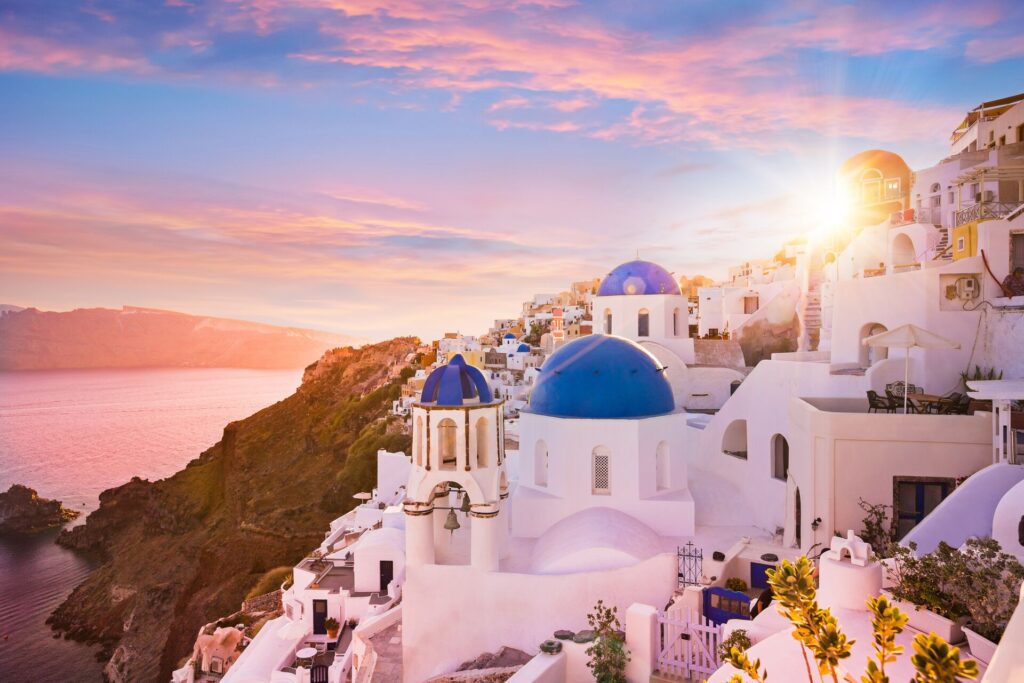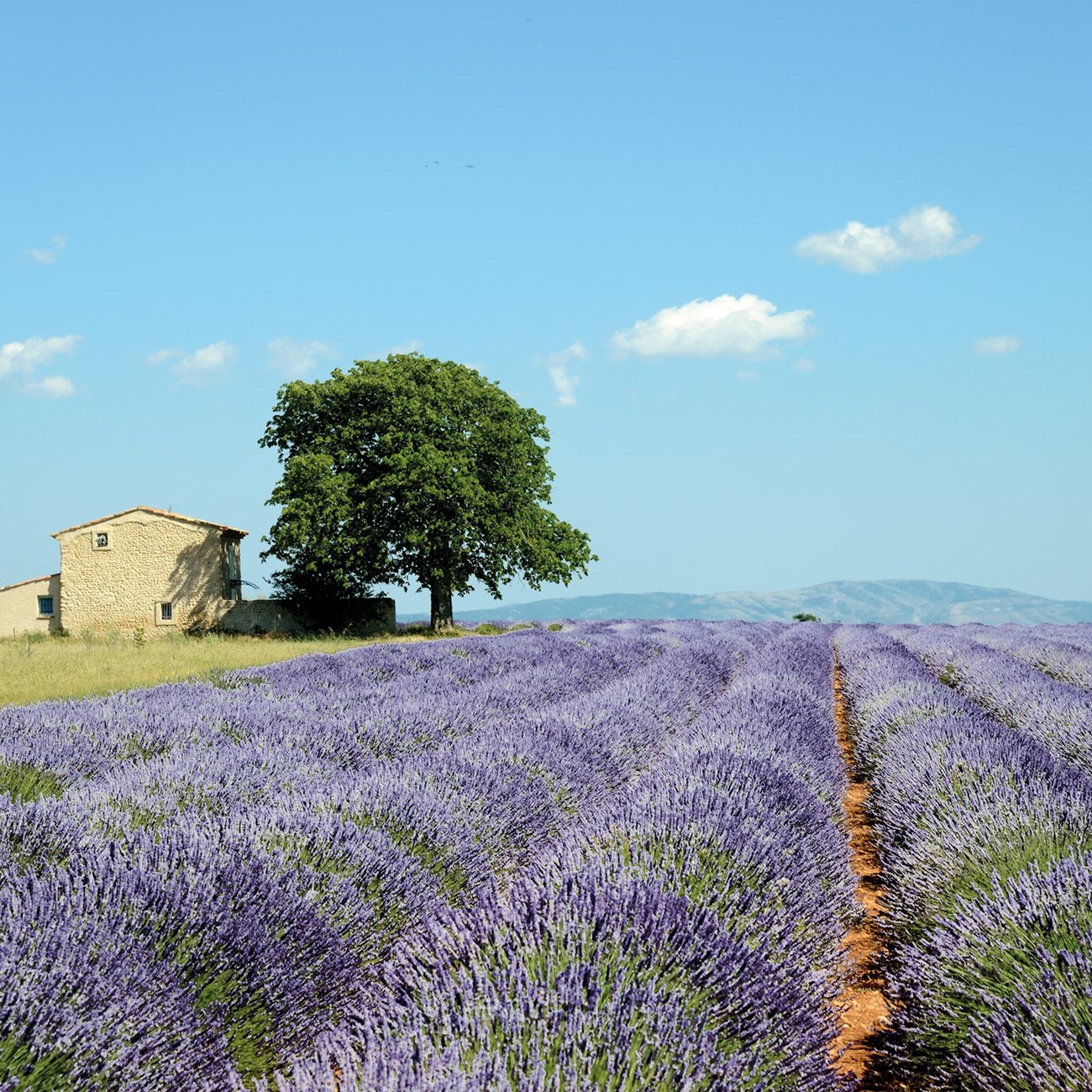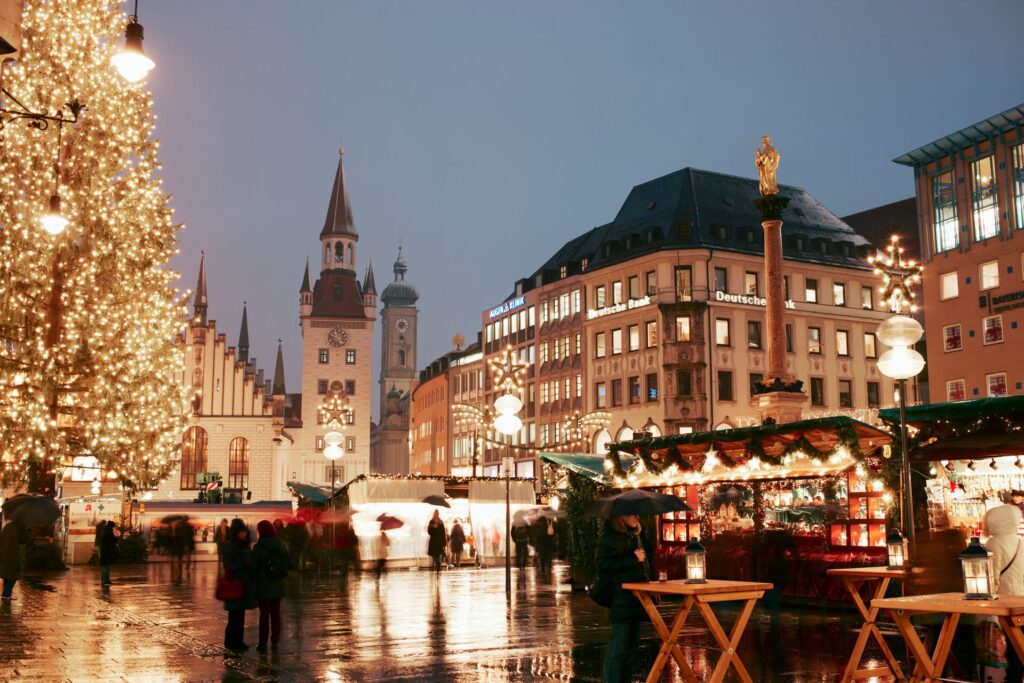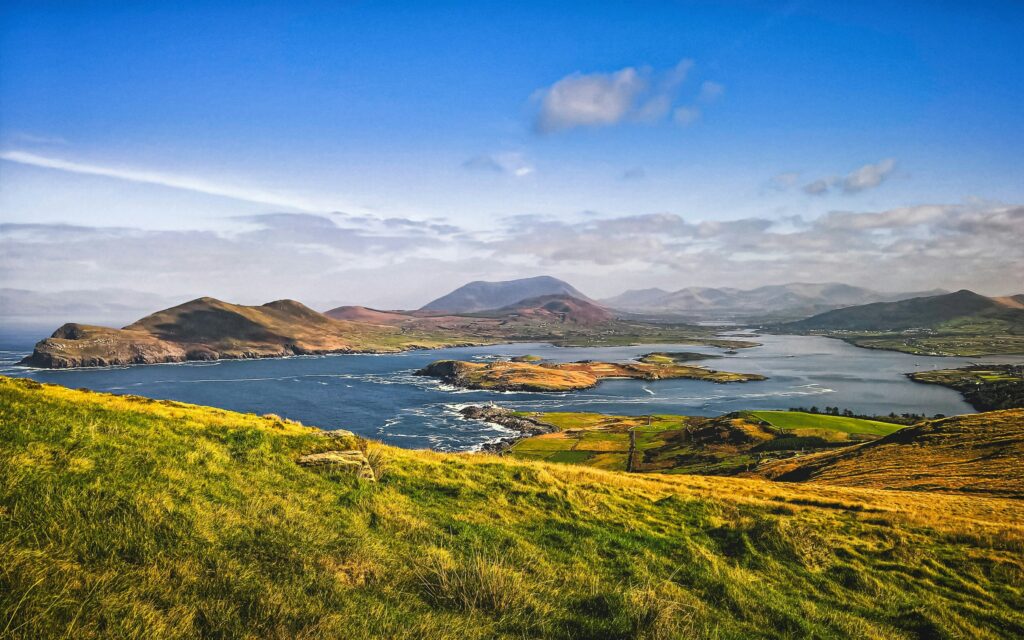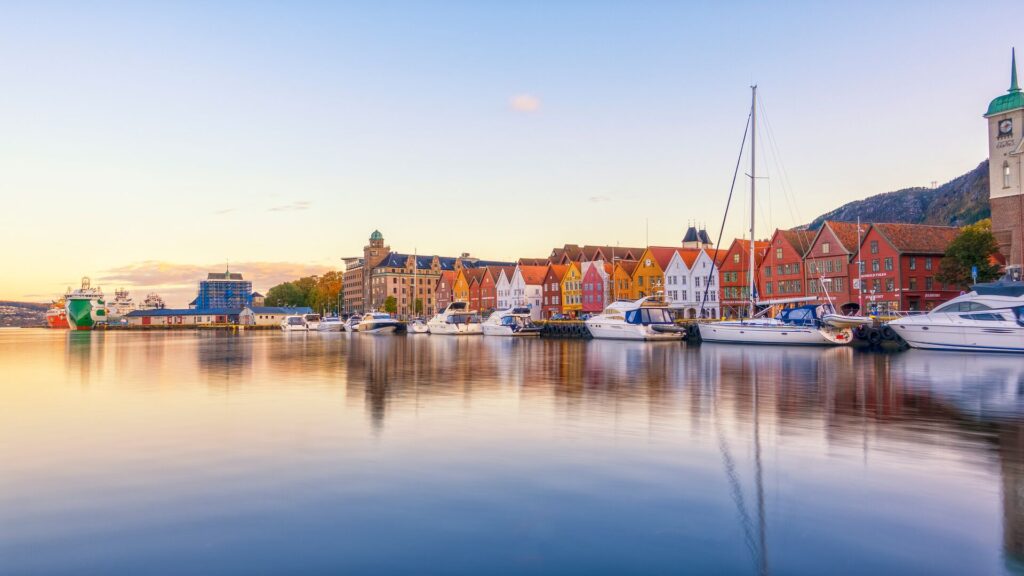Easter Traditions Around the World: Unique Customs and Celebrations
Whether you prioritize chocolate indulgence or church services, Easter is a joyful celebration brimming with eggs, vigils, and vibrant parades. As a significant date on the Christian calendar, many of our cherished traditions have even deeper historical roots. From beautifully painted eggs to lively water fights, join us as we explore some unique Easter traditions from around the world.
Easter: The overview
So, when is Easter? Easter is a significant celebration in the Christian calendar, typically falling on a Sunday between March 22 and April 25. How is Easter determined? The date is calculated based on the first full moon following the vernal equinox, meaning it varies each year and does not occur on a fixed date.
Why is Easter celebrated? Easter celebrates the resurrection of Jesus Christ, which is considered a cornerstone of Christian faith. Many Christians observe this day with special church services, festive meals, and various traditions that symbolize rebirth and renewal, such as Easter eggs.
What is Easter Monday? This day follows Easter Sunday and is observed as a public holiday in several countries, allowing individuals to continue celebrations and spend time with family. It’s often asked whether Jewish people celebrate Easter? No, Jewish people do not celebrate Easter, as it is a Christian holiday. Instead, they observe Passover, which often coincides with the Easter season. Passover celebrates the liberation of the Israelites from slavery in Egypt, sharing themes of renewal and freedom with Easter, yet distinct in its origins and significance.
In the lead-up to Easter, the significant period known as Lent begins on Ash Wednesday, marking 40 days of fasting and reflection, commemorating Jesus’ time in the desert. The last week of Lent includes Holy Week, starting with Palm Sunday, celebrating Jesus’ triumphant entry into Jerusalem. Maundy Thursday follows, remembering the Last Supper, while Good Friday marks Jesus’ crucifixion. Finally, Holy Saturday leads into Easter Sunday, which celebrates the resurrection of Christ.

The custom of the Easter egg hunt comes from Germany, with origins dating back to the late 16th century.
The USA
As with many Easter traditions around the world, in America it is a big family occasion full of big feats, big parades and big fun. One of the highlights across the country is joining Easter egg hunts, where families decorate eggs and search for hidden treasures. The White House Easter Egg Roll is a cherished annual event where kids roll themselves and eggs down the White House lawn, with tickets allocated through a lottery. Parades are also a big thing in the US, with the New York City Easter Parade and the French Quarter Easter Parade in New Orleans being two of the largest and most famous. Families gather for special meals featuring glazed ham, turkey and lamb, alongside traditional favorites like hot cross buns and deviled eggs.
The Easter Egg tree is a fairly well-established tradition in the US, but back in the 1890s it was somewhat a craze, particularly in New York. Before the advent of plastic eggs, many Americans meticulously emptied real eggs and dyed them in vibrant colors for Easter. They often hung these adorned eggs on tree branches using pieces of ribbon or thread. Known as Ostereierbaum, the Easter egg tree is a custom that originated from Germany and is one of the older Easter traditions around the world. Across parts of Pennsylvania and Appalachia, women considered egg trees a type of good-luck charm, especially when it came to fertility.
Greece
Greek Orthodox Easter is the most significant celebration of the year for many Greeks, marked by special traditions and family gatherings. Religion plays a vital role, with much of the country attending church on Easter Saturday.
After the service, Greeks traditionally break their 40-day fast with “mayeritsa,” a rich soup made from lamb intestines. The celebration continues with cracking dyed red eggs, symbolizing the blood of Christ. This game, known as Tsougrisma, involves players tapping their eggs together while chanting “Christos Anesti” (Christ has risen) and “Alithos Anesti” (Indeed he has risen). The player who successfully cracks both ends of their opponent’s egg is declared the winner, which is believed to bring good luck for the year ahead.
Italy
In Italy, Easter eggs are much more than chocolate – you may even find some car keys inside! Evidence of decorating Easter eggs goes back millennia, with ostrich eggs adorned with intricate designs, unearthed in Africa and dating back some 60,000 years. Across many cultures, the egg signifies rebirth and the spiritual significance of Easter.
However, the Italians have taken this one step further – a unique feature of their chocolate Easter egg is the “sorpresa,” a surprise hidden inside. This tradition has transformed from simple toys and trinkets to include high-end gifts like jewelry, watches, and even car keys in some of the most luxurious eggs. The thrill of uncovering the hidden surprise adds an exciting element to Easter morning celebrations.
The Paschal candle is also a significant symbol during Easter in Italy, representing the resurrection of Jesus Christ and the light of faith. Lit during the Easter Vigil on Holy Saturday, it signifies the transition from darkness to light. Traditionally made of beeswax, the candle features symbols like the cross and the year, serving as a reminder of Christ’s triumph over sin and death throughout the Easter season. Not just a symbol for Italy, the Paschal candle is important to many Christian denominations across countries, especially within the Roman Catholic, Orthodox and Anglican traditions.
SAVE UP TO $2,000 PER COUPLE* ON YOUR FIRST PREMIUM TOUR.
Plus receive latest offers, travel inspiration, and discover how your travels will make a positive impact. Together, WE MAKE TRAVEL MATTER®. Subscribe NowPoland
If you’re spending Easter in Poland then make sure you take your umbrella! One of the more suprising Easter traditions around the world, Śmigus-Dyngus, or Lany Poniedziałek (Wet Monday), is a lively Polish Easter Monday tradition where people drench each other with water. Traditionally, boys soak girls on Monday, while Tuesday is reserved for the girls’ revenge. It’s believed that if you sleep in on Wet Monday, you’ll be awakened with water.
Dating back centuries, the custom originated when boys would sneak into girls’ rooms on Easter Monday and drench them while still in bed, often followed by playful spanking with pussy willows. In some regions, boys would chant, “Dyngus, dyngus, po dwa jaja; nie chcę chleba tylko jaja,” meaning “I don’t want bread, only eggs.” The girl who gets soaked the most is said to be the next to marry. This well-loved tradition is celebrated throughout Poland and by Polish communities abroad, with similar customs also found in countries like Thailand, Lithuania, and Slovakia.
Germany
Easter bonfires, known as Osterfeuer, are a cherished festive tradition in Germany. On the evening before Easter Sunday, communities gather to light large fires, celebrating the end of winter and symbolizing light triumphing over darkness. This practice was particularly popular in regions like Hanover, Westphalia, and Lower Saxony, often occurring in beachfront areas.
This fiery tradition predates Christianity, originating with ancient Germanic tribes who honored the sun and nature deities with springtime fires. As Christianity spread, these pagan customs were incorporated into Easter celebrations and by the Middle Ages, Osterfeuer became an official part of Easter festivities. Modern celebrations have evolved to include barbecues, beer tents and live music, often accompanied by parades and torch-lit processions.
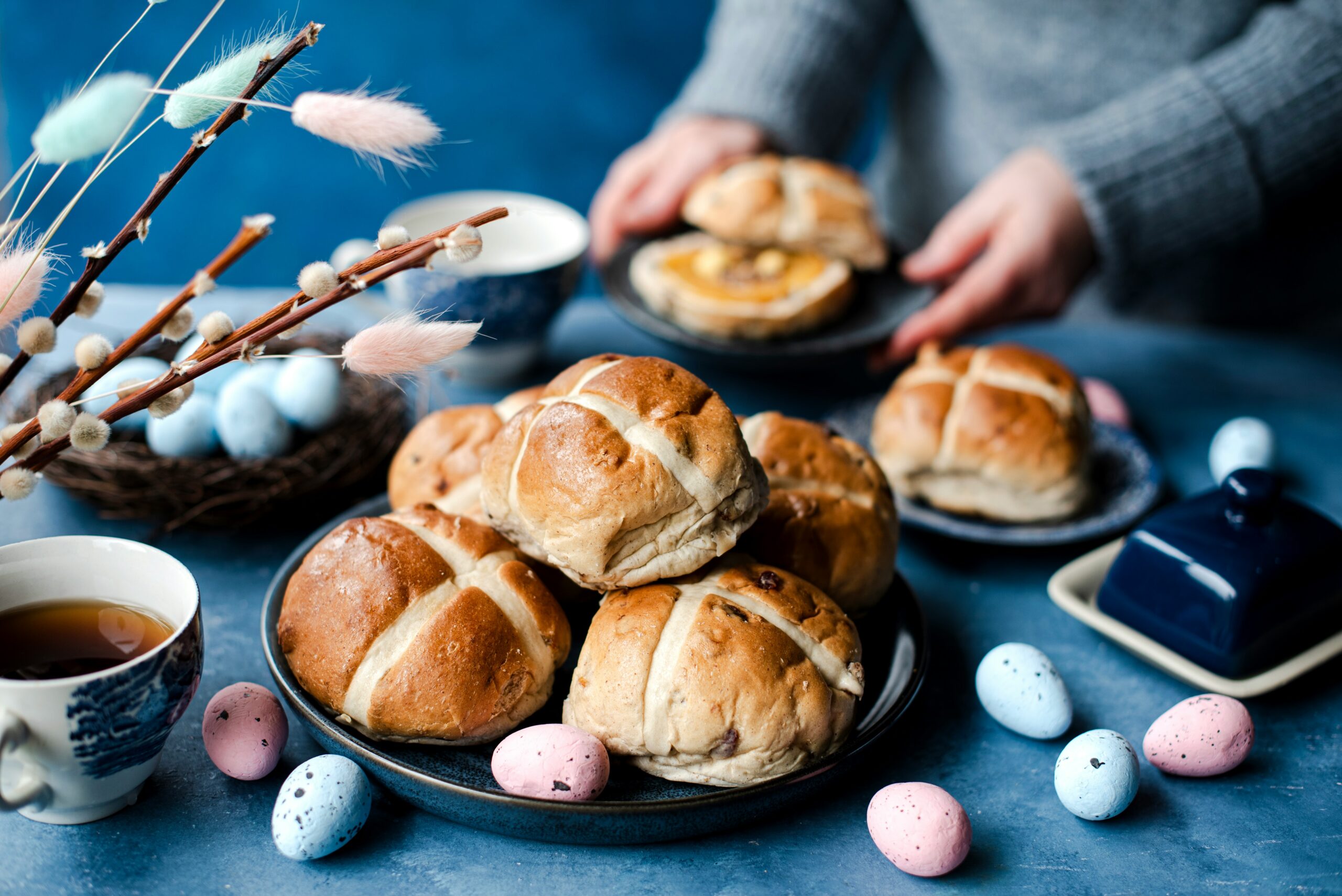
The Hot Cross Bun’s ingredients are themselves symbolic – the spices symbolize those used in the embalming of Jesus, while the bitter orange peel represents the sorrow of his crucifixion.
The UK
Head to the UK for Easter and you may find yourself maypole dancing among a whirl of ribbons! Originating from ancient springtime rituals to celebrate fertility and the return of life, the maypole became the center of festivity. Villagers swirled around a tall pole adorned with flowers, weaving intricate patterns while trying not to trip over each other’s feet – often resulting in a hilariously tangled mess! Whatever the result, you’re guaranteed cheery tunes and lots of laughter, proving that some traditions never go out of style.
Regain your energy by munching on hot cross buns, slathered with butter. These spiced buns marked with a cross are traditionally eaten on Good Friday, symbolizing the end of Lent.
France
In the town of Bessieres in France, thousands gather each year on Easter Monday to watch dozens of cooks make a giant omelette. One of the more unique Easter traditions around the world and made with 15,000 eggs, members of Giant Omelette Brotherhood of Bessieres pour gallons of egg yolk into a large pan in the main square of the town. Stirring with huge wooden spoons that look more like oars, they cook the omlette over an open fire. The tradition is said to have started with Napoleon Bonaparte, who while visiting the area, enjoyed his eggs so much that he asked that a giant omelette be prepared for his troops.
Sweden and Finland
In Sweden and Finland, on Maundy Thursday children go trick-or-treating dressed as witches, going door-to-door exchanging drawings for treats like chocolate eggs.
The tradition originates from the 17th-century witch hunts and is linked to the biblical story of Jesus’ last days. On Maundy Thursday, the evening before Good Friday, Jesus had the Passover meal with his disciples and was later betrayed by Judas, marking the start of his suffering. Many believed that when Jesus was sentenced to crucifixion, evil powers were unleashed, making Maundy Thursday known as the “night of the witches”. In Sweden, it was commonly believed that witches flew to a place called Blåkulla to celebrate with the devil on the night before Skärtorsdagen (Maundy Thursday). To protect themselves from witches, people would light fires and shoot off fireworks.
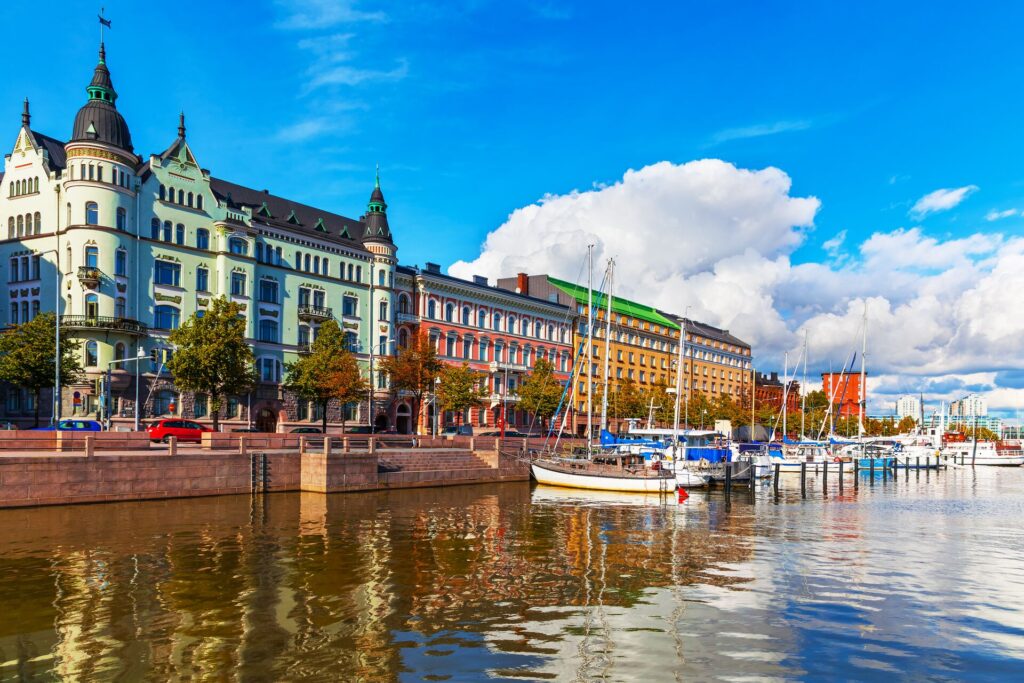
Guatemala
If you are looking for an Easter celebration bursting with color, then Guatemala’s Semana Santa is beyond comparison with anything in the Northern hemisphere. Intricate carpets of colored sawdust are painstakingly laid down along the cobbled streets, adorning the processional route. Preparations begin months in advance to create these intricate, beautiful offerings. First, sand is spread to level the cobblestones, followed by dyed sawdust in vibrant shades of red, yellow, blue, purple, green, and black. Pine needles, flowers, and native plants are added for decoration and fragrance. The carpet designs reflect Maya tradition, biblical symbolism and scenes from nature.
It seems somewhat a shame that a solemn procession of Roman centurions then marches over the carpets, carrying an image of Christ on the cross, but this in itself is a symbol of sacrifice.
Australia
Despite being one of the more widspread Easter traditions around the world, not everyone loves an Easter bunny. European rabbits were brought over to Australia in the 1800s, and have caused great environmental damage since then. In 1991, Nicholas Newland from the Foundation for Rabbit-Free Australia introduced the concept of the Easter Bilby. Bilbies, native Australian marsupials, are endangered, and this initiative aimed to raise awareness about the environmental damage caused by feral rabbits. The Easter Bilby serves as an alternative to the Easter Bunny and chocolate bunnies, with products featuring the bilby available in many Australian stores. This initiative not only promotes native wildlife but also helps raise funds for conservation efforts.
Have a try at Insightful Travel Trivia – 5 questions, 2 minutes. Take a pause and play the game.
LIKED THIS POST? SHARE WITH YOUR COMMUNITY


